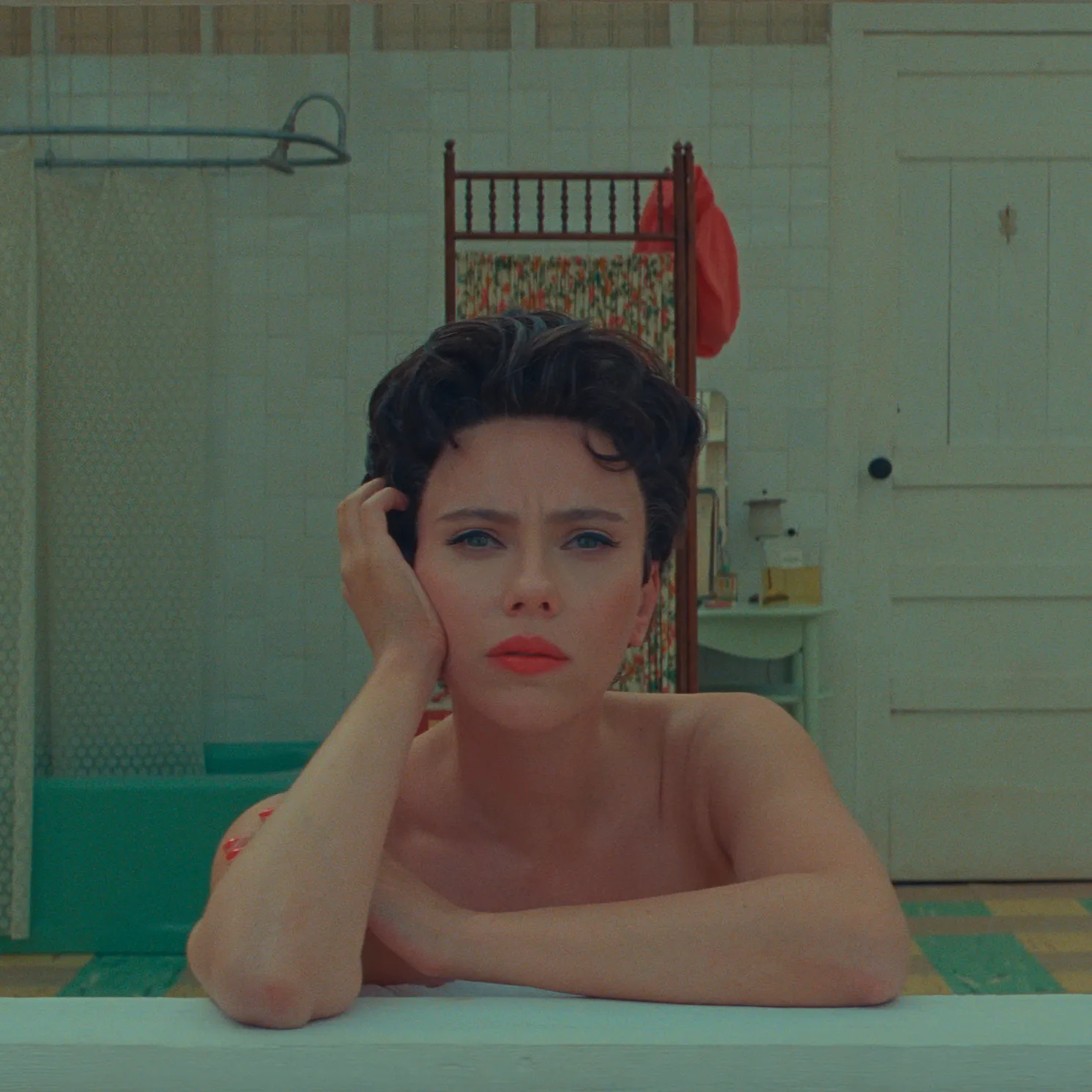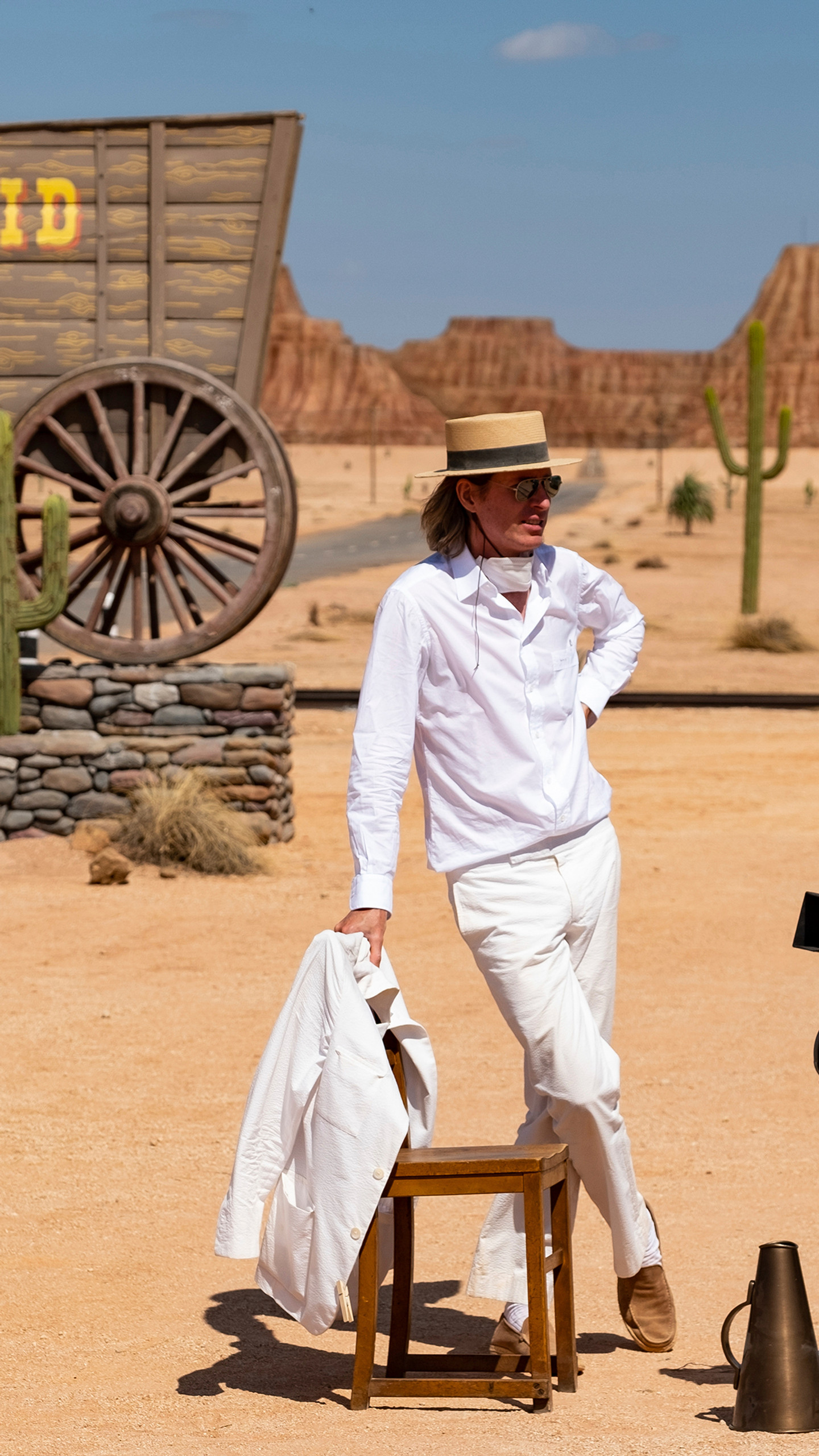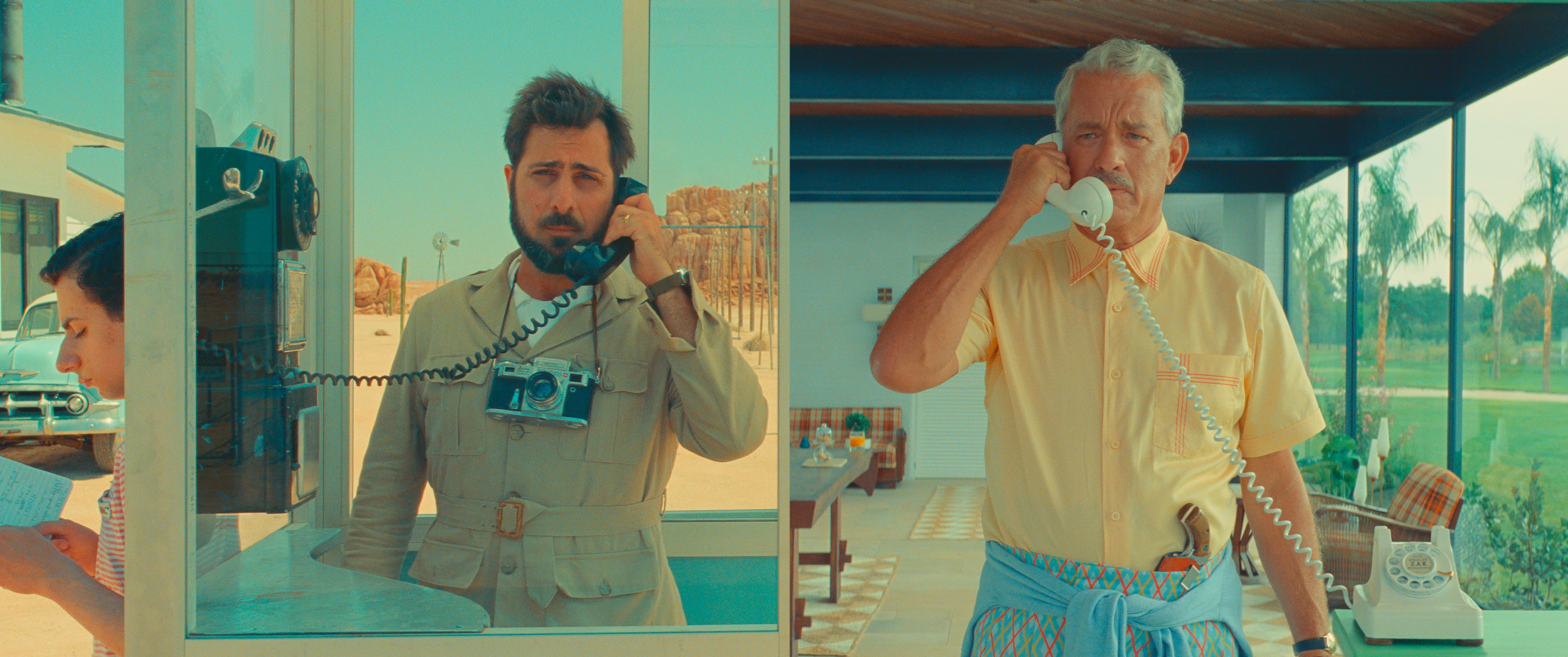
Scarlett Johansson in a still from Wes Anderson’s Asteroid City
Wes Anderson’s Asteroid City takes us on a voyage into the whimsical realm of meta-narrative storytelling, enchanting characters, and well-crafted visual gags, all executed with deliberate randomness
It is simply how his direction masks the intricate mess of details in each scene. A sophistication that is undeniably fun. His movies have information and the sets in his story that are massive and rare to pull off. He does not hide plot points as he does not withhold any suspense. His storytelling is so powerful that he lures his audience from seeing the obvious and then he keeps the suspense present. It includes the usage of blocking and staging, stellar writing and an equally brilliant performance.
His films have an evident impression of being narrated from the perspective of a young boy. He said once, “When you’re 11 or 12 years old, you can get so swept up in a book that you start to believe that the fantasy is reality. I think when you have a giant crush when you’re in fifth grade, it becomes your whole world. It’s like being underwater; everything is different.” It wouldn’t be a far cry to say that Anderson keeps the story lively by incorporating many child-ish elements. In The French Dispatch (2021), Timothée Chalamet’s Zeffirelli had a youthful ambition to him that was such a striking contrast to the rest of the characters in the movie.

Rushmore (1998) was one of the first movies that showed how well he executes the balance between visual wonder and well-written plots. The reason behind his master craftsmanship is the sincere dedication, and the almost obsessive execution control. He is famous for the precise cinematography where each camera movement is planned and each subject has a graphed location. Nothing can be out of place.
Maybe it is this obsession that makes even his cast recurring. Jason Schwartzman, Adrien Brody, Jeff Goldblum and Tilda Swinton are some who always find their way into an Anderson film. Asteroid City stars these actors, along with Scarlett Johansson, Steve Carell and Maya Hawke. Other Anderson regulars include Rupert Friend, Tony Revolori and Edward Norton. Each of these phenomenal actors do justice to the peculiar characters who find themselves stuck in the fiction town of Asteroid City.
The movie begins with narrator, Bryan Cranston, giving an introduction to the theatre production of Asteroid City. It is the most meta beginning of a movie. He introduces Conrad Earp (Norton) as the writer, director and mastermind behind the production. As soon as you see Earp, you see the eerie semblance to Wes. Even the way he approaches introducing the cast, the sets and idea behind the story are so abstract and yet precise. Earp also has a pretty intimate interaction with the lead of his play, who has acted in his previous plays too. It is a demonstration of how Earp loves his leading actors in a manner that he can’t seem to control. Sounds familiar, right?

The movie is a story of the production of a story. It shifts between behind-the-scenes snapshots of Earp’s Asteroid City and the final production of Asteroid City. The cast of the film essentially play a dual role. The cast of Asteroid City and the characters of the same. This is another demonstration of Anderson’s quirky uniqueness. It is so much harder to understand the story in simple writing but the magic that he creates on the screen makes it easy to understand. It goes without saying that the visuals of Asteroid City are beautiful. Everything has its place and significance. From having the entire set look two-dimensional as if to remind the audience that this film is actually Earp’s play and it is still so breathtaking.
As Asteroid City is set in a desert, the cacti and rock sculpture look handcrafted by someone who might as well be the creator of all. It will make you question your sight. The set includes many small things that will make you smile wide because of the ingenuity. For example, there is a ramp that is not constructed fully, and the board beside it reads, “Ramp closed indefinitely, route calculation error.” It is random and it is there and it will make you smile.
Switching between the black-and-white sets and vibrant fictional realism, Asteroid City is about a group of people who came to the town for junior stargazers and space cadets. The inventions of the children in the programme are things we dreamed of as a child; aeronautical induction through a jet pack, particle disintegration or a zapper, and astronomical imaging or a machine that imprints any design onto the moon. As you are entranced into the dreaminess of the story, Wes wakes you up. Throughout the movie, a lot is happening but none of the randomness comes with a shock value. Even with the most absurd plotlines, Anderson wants you to be interested in the movie because you can’t help yourself, not because there is a shock. You will leave questioning your sanity but without the need to jump out of your seat. It is a pleasant and mellow experience. Even the funniest jokes are subtle and will make you snicker with approval. No guffawing laughter. Nothing will disturb the balance, peace and genius of the story.
The dialogues of the movie will force you to pay attention throughout. If you get distracted, you will miss quite a bit. They are fast-paced and referential. Laced with sarcasm and quips. When we see Jason Schwartzman’s Auggie and all his children getting familiar with the City, there is a moment when the diner lady calls his daughters, princesses. They immediately correct her by telling her how they are a vampire, fairy and a mummy from Egypt. Then at random points of the movie, you will see them dressed up as them. Everything has its place.
Every character is saddled with engaging and idiosyncratic story arcs. Auggie’s oldest child, Woodrow aka Brainiac (Jake Ryan), is “shy but not intimidated” and had also figured out that his mother had died even though his father informed the children only three weeks after the death. Midge Campbell (Johansson) is an actress who is self-indulgent and has never felt guilt. She develops a girl-next-door relationship with Auggie that they don’t hide well.

Maya Hawke plays the role of a teacher, who has taken her students on an excursion to the City. As the itinerary goes haywire due to the orders of the President, she tries to manage the lesson plans and the inquisition of her students. They are unexpectedly the most hilarious comedic reliefs and the source of a music number. Along with them is Steve Carrell’s as the motel manager, who is also running a vending machine for any item imaginable. Even real estate. It is one of the best casts I have seen. While I would have loved to see Carrell, Swinton and Stephen Part (parent of a space cadet) more, the movie had many phenomenal actors to be able to give each of them sufficient screen time.
The story I find most fascinating is that of Adrien Brody’s Schubert Green. While he had a limited screen time, his character was one that had only extremities. He is a director, who was just left by his wife and is now residing in the theatre where Earp’s play is going on. His directions are as abstract as this story and when Schwartzman approaches him as an actor, he says that he must keep doing the play whether he understands the story or not. It is as if he is telling us, whether we understand the story or not is almost irrelevant because as long as we are there, we are in it.
Swinton plays the role of a scientist. Her blatant acceptance of not understanding what is happening and specifically not knowing the meaning of some astronomy happenings is a dig on the audience. She just accepts that there are some dots that are blinking and whether she knows why or not, it will happen. The science is an afterthought. She is more invested in the lives of the pre-teens in the camp and ensures that she us surrounded by them.
The best part of the film is how it speaks to the audience; it not only portrays the creation of the play/story, but also hints that we are crucial in discerning its deeper meaning. Wes Anderson involves us in absurdity and he does it tactfully. Like Schwartzman’s character asking if he was doing the play right, I also thought to myself, if I saw the movie right? I assure myself I did and even if I didn’t, Asteroid City is the kind of movie that shows something new. A new set design that you fall in love with, or another dialogue that will leave you smiling, or simply a reminder that childlike wonder is not something you can outgrow. It’s a movie that is best experienced on the big screen because Anderson shines through his art and his art should be enjoyed to its fullest.
More from Culture
Comments
*Comments will be moderated











